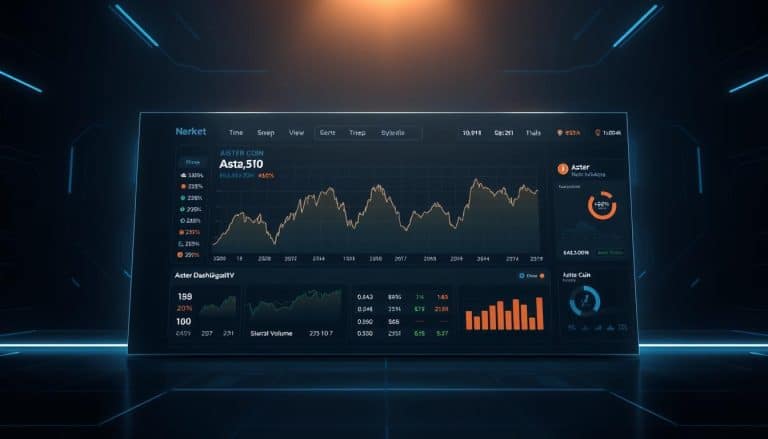Xrp Price Trend Indicators
Cryptocurrency markets are volatile and unpredictable, making it difficult to accurately analyze prices and determine the best course of action for trading or investing. Technical analysis is a form of market analysis used to forecast future price movements by studying past price patterns. This type of analysis is based on the assumption that price movements follow identifiable trends and can be charted accordingly. XRP price trend indicators are important tools that can be used to identify potential trends in the cryptocurrency market. This article will look at some of the most popular XRP price trend indicators, including trend lines, support & resistance levels, moving averages, relative strength index (RSI), Bollinger Bands, volume and how these can be combined for maximum effectiveness.
Basic Principles of Technical Analysis
Technical analysis is an approach to predicting future price movements of a security by analyzing historical data, such as price and volume trends, with the objective of ‘reading’ the markets’ collective subconscious. This type of analysis incorporates sentiment analysis and price action to identify patterns in the data that may indicate where prices are heading. Trend lines are commonly used to plot these patterns, which helps investors gauge potential levels of support or resistance relative to current market prices. A trend line is created by plotting two extreme points on a chart and then extending it out into the future. This can be used to identify areas where there may be buying opportunities or at what point traders should consider closing their positions. Transitions between different points on a chart can also provide useful information about possible changes in direction or strength of a particular trend.
Trend Lines
Charting the movement of an asset over time can be accomplished by drawing trend lines. Trend lines are used to aid in sentiment analysis by providing a visual representation of the direction and strength of price patterns. They can be used as indicators for investors, helping them identify potential buying or selling opportunities. The most common type of trend is a long-term line that shows whether the overall market sentiment is positive or negative. In addition, short-term lines can help traders identify shorter-term fluctuations in prices that may not be visible on longer time frames. By analyzing these trends, investors can gain insight into the current and future direction of prices which they can use to inform their trading decisions. With this knowledge, they may then look to identify support and resistance levels from which to trade around.
Support and Resistance Levels
Identifying support and resistance levels can provide valuable insight into the direction of asset prices, giving investors an edge in their trading decisions. Support and resistance levels are used as part of fundamental analysis to identify potential buy or sell signals. These psychological levels form when a price has difficulty breaking through a certain level, either up or down. This can be because of previous traders setting limit orders around those prices, or due to some sort of external factors such as news events or market sentiment that cause traders to become hesitant at that particular price point. In order to successfully capitalize on these support/resistance levels, investors must be able to accurately recognize them:
- Look for past areas where the price bounced back from after falling; these could indicate strong support levels
- Identify a peak in the price where it struggled to move beyond; this may indicate strong resistance
- Pay attention for significant news events and market sentiment shifts which could affect the overall trend
Understanding how support and resistance work can give investors an advantage when making trading decisions. With this knowledge, they can better assess whether a trend is likely to continue or if there is an imminent reversal in direction. As such, transitioning into looking at moving averages provides another way for investors to analyze XRP’s price trends.
Moving Averages
Moving averages are a widely used technical tool to analyze price trends, where the average of past data points is plotted over a specific timeframe in order to identify potential momentum shifts. How can investors use this information to their advantage? The two main types of moving averages are the Simple Moving Average (SMA) and Exponential Moving Average (EMA). Using these tools, investors can look for certain patterns such as crossovers or candlestick patterns that could signal a change in the direction of an asset’s trend. For example, when a short-term EMA crosses above a longer-term EMA it is typically seen as an indication of bullishness, while if it crosses below it’s usually seen as bearish. Additionally, traders may also be able to spot other indicators like MACD crossovers which could help confirm momentum shifts and market sentiment.
| Indicator | Usefulness |
|---|---|
| SMA & EMA | Identify potential momentum shifts |
| MACD Crossover | Confirm momentum shifts and market sentiment |
| Candlestick Patterns | Spot potential reversals in trend direction |
In conclusion, moving averages provide valuable information for investors looking to take advantage of current or emerging trends. This data combined with other indicators such as Relative Strength Index (RSI) can often give investors an edge in trading decisions.
Relative Strength Index (RSI)
Analyzing the Relative Strength Index (RSI) can help investors gain insight into market sentiment and better prepare for future trading decisions. The RSI is a momentum-based indicator, often used to identify overbought or oversold conditions in an asset’s price. It oscillates between 0 and 100; readings below 30 indicate an oversold state and readings above 70 suggest an overbought state. These buy/sell signals may be used by traders to enter or exit positions in XRP markets. Traders should also consider additional factors such as volume, trend direction, and other technical indicators when evaluating the strength of a potential signal. By combining multiple analysis techniques, traders can more accurately predict price movements of XRP with increased confidence. Transitioning into the subsequent section about Bollinger Bands will provide investors further insight into XRP price trends.
Bollinger Bands
Bollinger Bands are a powerful tool for traders looking to maximize their returns by gaining an understanding of the market’s volatility. These bands are composed of a simple moving average and two outer bands, with the upper band being two standard deviations above the moving average and the lower band being two standard deviations below it. By monitoring price action within these bands, traders can gain insight into how asset prices react around certain levels or pivot points, helping them make informed decisions about when to buy or sell XRP.
The use of Bollinger Bands can also provide information about the direction of trends in XRP price, as well as help traders identify possible entry points. This is accomplished by calculating the distance between each band and then comparing it with historical data to determine if support or resistance is likely to come into play at any given moment. With this knowledge in hand, investors can have greater confidence in their trading decisions based on current market conditions and volume data. Moving forward, it is important that traders continue to monitor XRP price action through Bollinger Bands in order to stay one step ahead of the competition.
Volume
Having discussed Bollinger Bands in the previous section, this section will focus on Volume as an indicator of XRP’s price trend. Volume is a measure of how much trading activity there is for a given asset. Momentum traders use volume to detect potentially profitable entry and exit points into the market; when combined with other indicators, it can be used to maximize effectiveness. In order to do so, one should look out for volume spikes that indicate high levels of interest in the asset and could signal potential bullish or bearish moves. The following are five ways by which traders can use volume analysis:
- Identify buying and selling pressure – High levels of volume indicate high levels of buying or selling pressure which can indicate an imminent change in direction for prices.
- Detect breakouts – A breakout from a consolidation period typically occurs with increased volumes as trading activity picks up during the breakout move; this signals a potential trend reversal or continuation depending on the direction of the breakout move relative to prevailing trends.
- Spot divergences – Divergences between volume and price action may signal underlying strength or weakness in an established movement which could result in a trend reversal in due course if it persists long enough.
- Follow trends – A sustained increase or decrease in volume over time usually indicates that momentum is building behind an existing trend – either up or down – and more often than not, these trends are likely to persist until new information comes along that changes sentiment drastically
- Monitor exhaustion – Unusually high volumes at certain points may signify exhaustion among buyers/sellers who are pushing prices higher/lower respectively; this may serve as a warning sign that current movements might soon reach their endpoints before reversing back again towards its original state/direction prior to such movements occurring
Overall, analyzing XRP’s volume data can provide valuable insights into possible reversals, continuations, breakouts and exhaustion during its price movements; thereby allowing traders to make better-informed decisions when entering trades based on such factors alone or when combining them with other indicators for maximum effectiveness .
Combining Indicators for Maximum Effectiveness
By combining various technical indicators, traders can gain a deeper understanding of a given asset’s price movements and capitalize on opportunities for maximizing their profits. Candlestick charts are one of the most popular tools used by traders to assess the direction of an asset’s price trend. By combining candlestick charting with other types of analysis such as support/resistance levels or volume data, traders can develop a better sense of the overall structure of the market and identify potential entry and exit points more accurately. Price action is another indicator that can be combined with candlestick charting to get an even better picture of a given asset’s price trends. Price action analysis involves studying how prices have reacted in the past to certain events or levels in order to predict future price movements. Combining these two indicators provides traders with an effective way to analyze and interpret market movements in order to make more informed decisions about when to buy or sell assets for maximum profitability.
Frequently Asked Questions
What is the most reliable indicator of XRP price trends?
The most reliable indicator of price trends is a combination of Technical Analysis and Fundamental Analysis. Using these two approaches together provides comprehensive data that can be used to accurately forecast future price movements. By analyzing both the technical aspects of trading, such as volume and volatility, and the fundamental factors related to a security or asset, investors can make informed decisions about their investments.
Is there a way to predict the exact XRP price at a certain point in the future?
It is not possible to predict the exact XRP price at a certain point in the future. Technical analysis and market sentiment may help identify potential price trends, but these are uncertain and subject to change. Accuracy can be improved by keeping up with market news and events.
How does the XRP price compare to other cryptocurrencies?
The price of XRP is subject to volatile market fluctuations, with sentiment driving its value compared to other cryptocurrencies. Analyzing data-driven trends can help identify highs and lows in the market, enabling investors to make informed decisions on how best to navigate this dynamic landscape.
What is the long-term outlook for XRP price trends?
The long-term outlook for price trends is heavily influenced by trading strategies and market sentiment. Analyzing the data collected from various sources can help to identify potential patterns, allowing investors to make more informed decisions when it comes to their investment choices.
What are the risks associated with investing in XRP?
Investing in XRP can be associated with volatility and liquidity risks. Prices can fluctuate significantly, making it difficult to accurately gauge its value in the long-term. Additionally, XRP may not have enough market participants and liquidity to support large transactions without causing price swings.






 Bitcoin
Bitcoin  Ethereum
Ethereum  Tether
Tether  XRP
XRP  USDC
USDC  TRON
TRON  Lido Staked Ether
Lido Staked Ether  Dogecoin
Dogecoin  Figure Heloc
Figure Heloc  Cardano
Cardano  WhiteBIT Coin
WhiteBIT Coin  Bitcoin Cash
Bitcoin Cash  Wrapped stETH
Wrapped stETH  Wrapped Bitcoin
Wrapped Bitcoin  USDS
USDS  Wrapped eETH
Wrapped eETH  Binance Bridged USDT (BNB Smart Chain)
Binance Bridged USDT (BNB Smart Chain)  Chainlink
Chainlink  Monero
Monero  LEO Token
LEO Token  WETH
WETH  Zcash
Zcash  Stellar
Stellar  Coinbase Wrapped BTC
Coinbase Wrapped BTC  Ethena USDe
Ethena USDe  Hyperliquid
Hyperliquid  Litecoin
Litecoin  Sui
Sui  Avalanche
Avalanche  Hedera
Hedera  sUSDS
sUSDS  Shiba Inu
Shiba Inu  Dai
Dai  USDT0
USDT0  Canton
Canton  Toncoin
Toncoin  PayPal USD
PayPal USD  World Liberty Financial
World Liberty Financial  Uniswap
Uniswap  Cronos
Cronos  Ethena Staked USDe
Ethena Staked USDe  Mantle
Mantle  USD1
USD1  Polkadot
Polkadot  Rain
Rain  Bitget Token
Bitget Token  MemeCore
MemeCore  Tether Gold
Tether Gold